A significant point. At last, at long last, I take the blue plastic box out of the drawer and meet again with my acrylics. Several trips up and down stairs - for the pliers to hold the lids and twist the tubes open, for the piece of natural sponge, dried up, for the plastic pot for water and the old plastic box lid I use as a palette that carries dried skins of former efforts. I choose the kitchen, but do not use the easel. Instead, newspaper on top of the island unit. It is thick oak, new, varnished, but still scary -- thick layers of newspaper to protect it, and one has an article about Howard Hodgkin’s new pictures, his red and green and yellow thick brushwork, a bon voyage wish underneath my picture. I tape a large sheet of watercolour paper, almost card, thick and white, on to my drawing board with masking tape. Each familiar ritual delights. Colours selected, squeezed on to palette - carmine red, naples yellow, sap green, paynes gray. Brush. I paint a dead tulip. Its petals have dried, shrunk, and twisted apart to reveal the black pistils and the swollen stamen. I love it; I love the painting I made. It sings out of the page. The accidental accuracies dance.
Later I add a purple tulip. This too was dying but the petals had stayed closed. It didn't work as well. I tried adding a dark dark grey background on one side, almost black. It helped but it still didn't really work.
I stand the picture on the drawing board under the window and walk to the other side of the kitchen to look at it. How wonderful is this? that something you've made, becomes slightly strange and slightly wonderful just by moving back across the kitchen.
Several days later, I work some more on the picture, having lived with it and thought about it, having watched it and looked at the spaces as I passed by. It had started like a rather wild and out of control Elizabeth Blackadder with an empty background, flowers placed on the paper separately rather composed as a bunch from the beginning. But now I thought that I should have painted a background as the first act. I added a daffodil from the bunch that a friend (a new friend - what a delight!) had given me at Easter. They were creamy white and double, treble, quadruple, with curly edged petals and dark orange insides. I painted roughly on the white paper and then the background could not any longer be resisted. A sludge of paynes gray with some white and a dash of ultramarine blue, large brush, edging round the wild red tulip and then using a damp sponge to retain its brightness where grey had invaded naples yellow or carmine red. Then the daffodil again, this time trying to use the grey as shadow as well as background. Not bad -- the frothy feel was there. Then one of the miniature wild daffodils that I had planted along the bank by the pond and that had not been eaten by the geese. Tiny delicate see-through, a limey lemony yellow and pale pale lemony white. When I stand back at the other side of the room, I love it, even though I can see the petals are not quite in the right place - they wouldn't close up properly if time ran backwards and the flower became bud.
I stand the painting, still taped to the board, in the fireplace where the black painted wall acts as a suitable backdrop. I like to catch sight of it by accident and see if I can find anything new to look at. The tape begins to curl off so I carefully remove it, leaving the white framing edge that pleases me.
Monday, 7 April 2008
Subscribe to:
Post Comments (Atom)
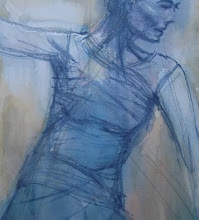

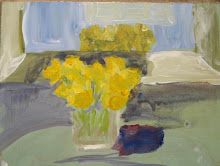

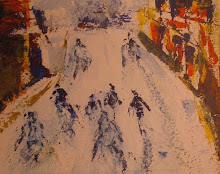
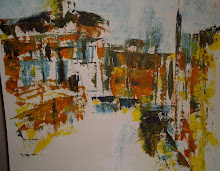
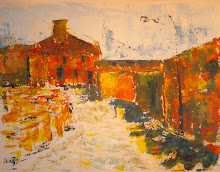






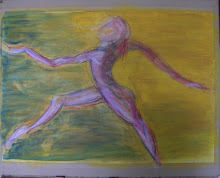
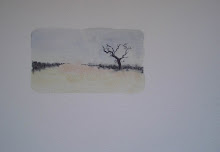
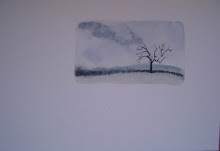





1 comment:
It's wonderful to read when you are pleased with your drawing. (You're very critical of your work.) I'm no artist, but I think you're right, the tulip dances out of the page, in fact I think the four flowers in the finished picture dance together on the lovely background colour.
It broke into my unconscious in last night's sleep that you had talked about having carpo-tunnel syndrome; why hadn't it registered before? I AM a writer, and feel sympathy, with your description of the writing process very real. I have a colleague, an academic and a poet, who had the op. and was fine. So take courage. You need to be able to write and draw with all those interactive processes available.
1d
Post a Comment